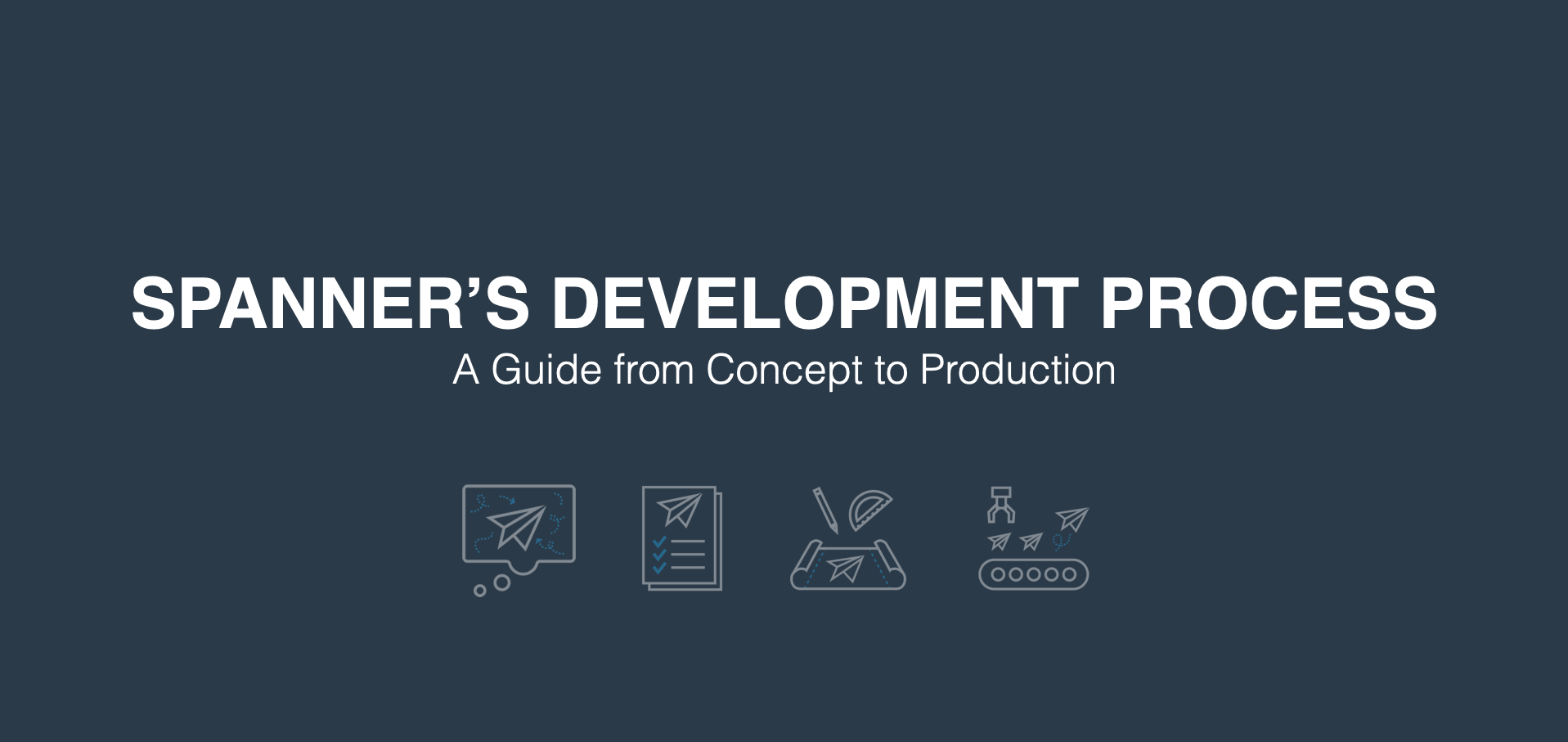Spanner's Development Process: A Guide from Concept to Production
Spanner's development process is structured around distinct phases, each culminating in key milestones that ensure we move forward with confidence. This balance between design clarity and risk mitigation helps us shepherd your hardware idea from concept to reality. Let's delve into the core stages:
Phase 0: Concept - Building the Foundation
This foundational stage establishes the context for your product's development journey. We work to define the product concept in terms of user experience (UX), problem-solving capabilities, market fit, and the underlying business case. This essentially creates the narrative backdrop your product will fulfill. Activities here involve a multitude of stakeholders, from marketing and production to finance, ensuring a holistic approach to the Initial Product Requirements Document (PRD), finalized Marketing Requirements Document (MRD), User Experience and Industrial Design Vision, Branding and Marketing Strategy, and the Financial Model. This phase typically lasts 1-6 weeks.
Phase 1: Definition - Forging the Blueprint
The Definition phase acts as the linchpin of the program. Here, we create a robust design and engineering strategy, harmonizing requirements across design, engineering, manufacturing, and marketing. Technological hurdles are meticulously identified and overcome with validated solutions. This phase involves architecting the product, rigorously debating trade-offs between cost, size, power, and performance for all features. Crucial questions regarding the manufacturing process are addressed to minimize risks and prevent major pivots later. This iterative process involves brainstorming novel architecture concepts, followed by meticulous design, prototyping, testing, and rapid iteration. A successful completion of this phase signifies the design and engineering teams (ID, UE/UX, ME, EE, FW, SW) are equipped to embark on the Detailed Design phase with a comprehensive understanding of all development facets. The Definition phase typically ranges from 6-10 weeks, delivering an updated PRD, validated architecture (ME/EE), finalized system block diagrams (ME/EE), refined Industrial Design (master surfaces in CAD), initial CAD of Printed Circuit Board Assemblies (PCBA), and the preliminary Bill of Materials (BOM).
Phase 2: Detailed Design - Refining the Details
This pivotal stage involves meticulous detailing of the entire system from a design perspective. Given the interdisciplinary nature of development, this phase revolves around the iterative design, construction, and testing of three to four prototype series, each progressively refining the level of detail. The ultimate objective is to reach a finalized design that paves the way for tooling design, necessary for manufacturing the product. This milestone marks a critical juncture, where the costs associated with any alterations surge due to significant investments in production tooling (plastic injection molds, metal casting molds, etc.). Consequently, rigorous testing and validation become imperative to ensure design compliance with all specified requirements. By meticulously scrutinizing the design during this phase, potential issues can be identified and addressed proactively, mitigating the risk of costly modifications downstream. The Detail Design phase, with its multiple rounds of prototyping, tends to range 20-24 weeks, resulting in a finalized PRD, 3-4 rounds of prototypes, detailed engineered parts and systems (ME CAD + EE CAD), updated BOM & Cost of Goods Sold (COGS) with vendor quotations, Test & Analysis Reports (MEl, EE, FW), and a tactical plan for Manufacturing Development and Fabrication tooling quotations.
Phase 3: Manufacturing Development - Gearing Up for Production
The Manufacturing Development phase marks the formal initiation of manufacturer engagement and the preparation of production tools and facilities. The primary objective is to ensure production can commence at the anticipated volume rate, with all requisite tests and quality checks validated. Reliability testing plays a significant role here, uncovering any potential failures that necessitate adjustments to parts using the final materials and manufacturing processes. Specialized equipment for cycle and reliability testing will be meticulously designed and fabricated to subject the product to thousands of simulated usage cycles. The successful completion of this phase signifies that the product is primed for shipment; not only does the design demonstrate functionality and reliability within a volume production setting, but it also attains a verified yield and cost rate deemed acceptable by the business. This milestone underscores the successful convergence of design integrity, reliability assurance, and cost-effectiveness. Through a combination of the client team, CM resources, logistics partners, and Spanner support, the end goal can be realized: product in customers’ hands. The average timeframe for this phase is typically 8 months+ to reach the Production Validation Test (PVT) stage.
Spanner: Tailoring the Journey
While this is the overall process, Spanner can jump in at any stage to address your specific challenge. We understand that every product development journey is unique, and we're here to help you navigate it successfully.
Overall, Spanner's development process is designed to be transparent, collaborative, and minimize risks while bringing your innovative hardware idea to life.
Spanner is a premier Silicon Valley product strategy, staffing, design, and development studio specializing in amazing products. Our in-house team of experts, composed of Mechanical Engineers, Electrical Engineers, and Industrial Designers, provide the full range of product development services - from concept generation through prototypes and production start.
Interested in learning more about what it’s like to collaborate with Spanner?






